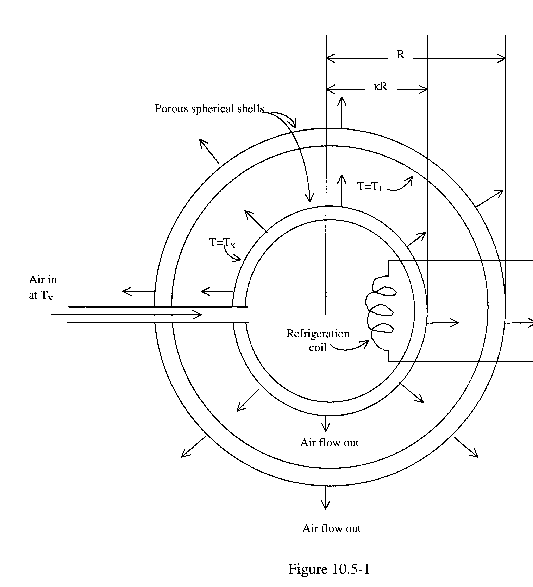
For this problem we consider two concentric porous spherical shells with radii of R and kappa*R. The temperatures at the surface of the outer inner wall is T=T1 and the temperature at the inner outer wall is T=Tk as seen in the figure below.

As the figure shows dry air is blown outward radially from the inner shell into the middle space and out the outer shell. To solve the problem we want to develop an equation for the rate of heat removal form the inner space as a function of the mass flow of gas. We start with the continuity equation assuming that velocity in the theta and phi directions both equal zero. By integrating the continuity equation we are able to start at Equation 10.5-22 of BS&L.
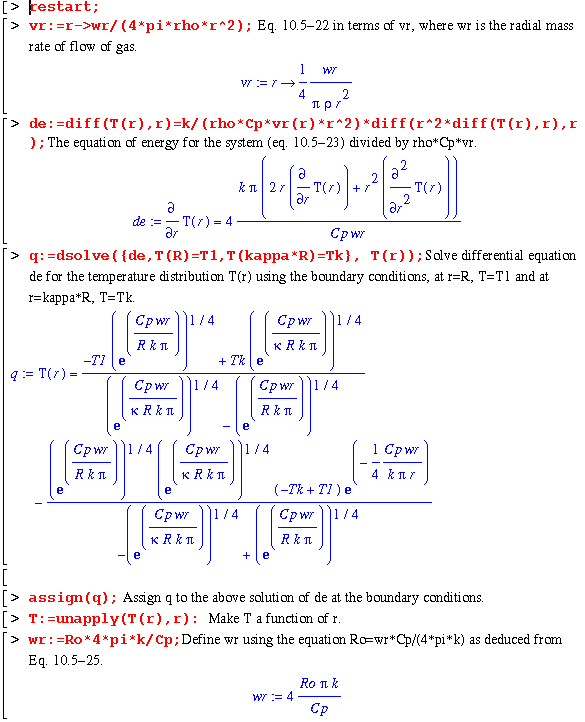
Later on in the problem we want our equations to include the parameter phi that determines the amount of transpiration, so we will introduce it into our equations now.
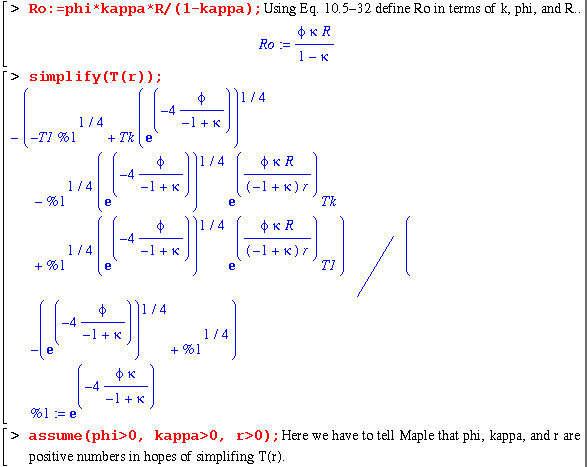
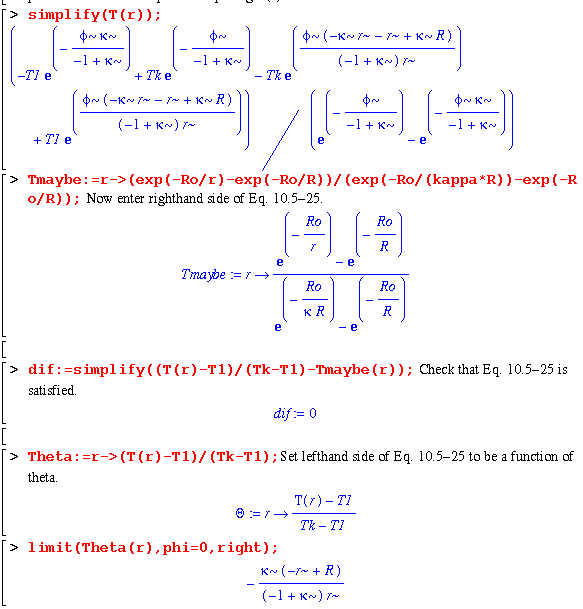
We will now check to see if our equation T is what BS& L have, which it is. Next, we move on to find the rate of cooling.
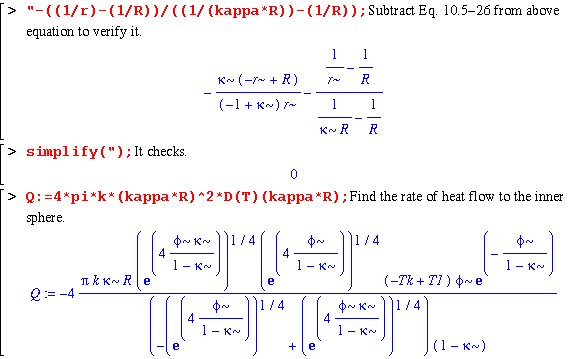
We now want to check if our Q matches that of BS& L in Eq. 10.5-30.
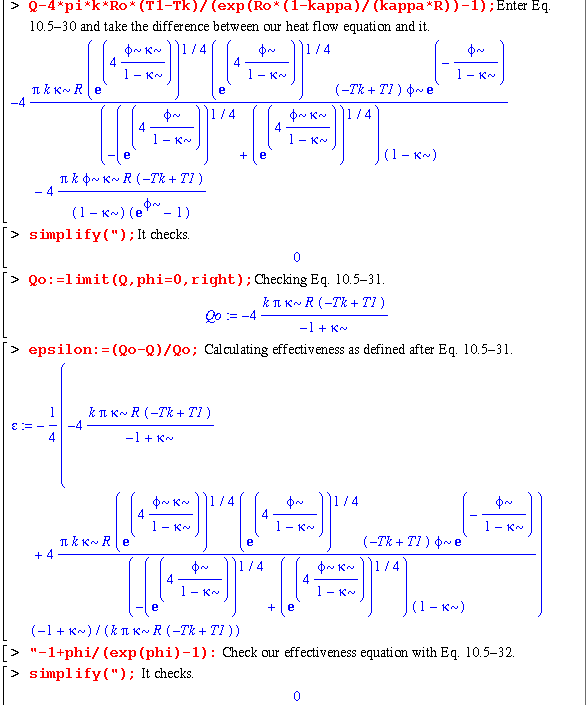

By using the plot function in Maple to graph the epsilon function, Eq. 10.5-32. A second plot can also be done that illustrates for low values of phi, the effectiveness is approximately phi/2.
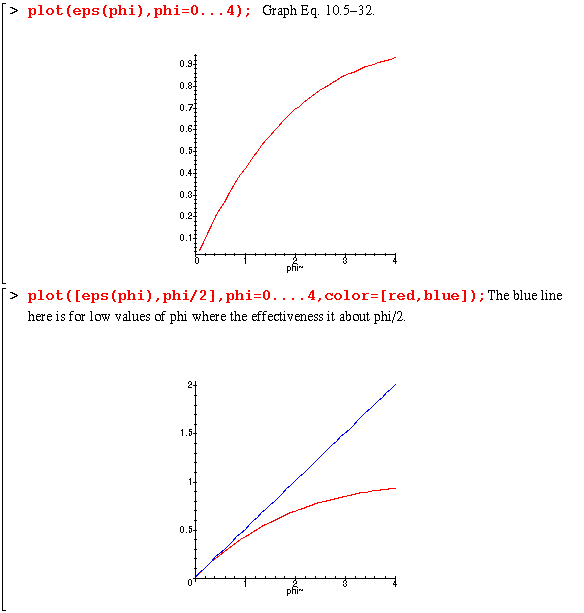
A numerical example can be done to demonstrate the temperature distribution. We will use the following values:
We will follow the same procedure as above, but this time we will not tell Maple to assume any values for r, kappa and phi as we did before.
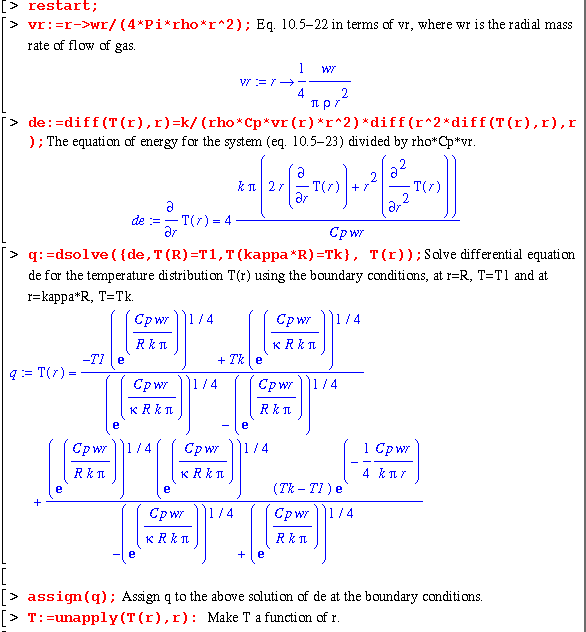
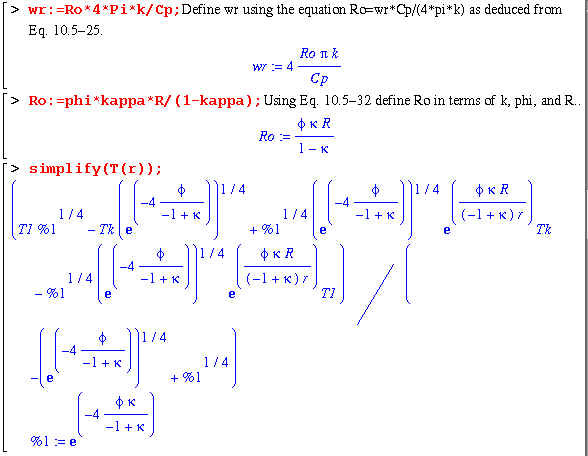
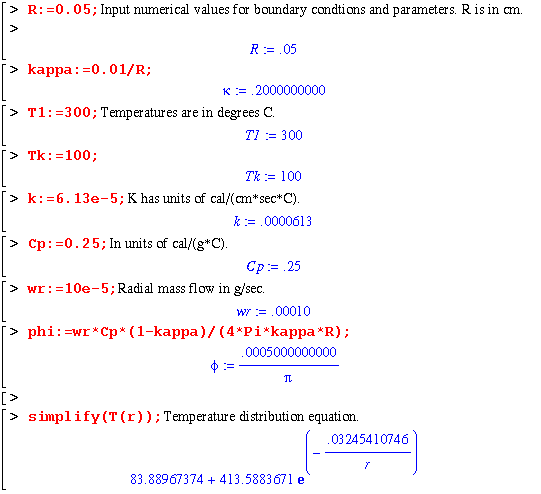
This looks alright for a temperature distribution of a small phi.